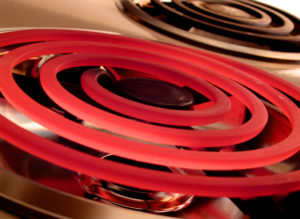 Every day, millions of people cook a meal without giving it a second thought. But much like getting behind the wheel of a car, each time they fire up a burner or turn on the oven, they’re putting themselves at risk — even though it’s something they’ve probably done countless times.
Every day, millions of people cook a meal without giving it a second thought. But much like getting behind the wheel of a car, each time they fire up a burner or turn on the oven, they’re putting themselves at risk — even though it’s something they’ve probably done countless times.
Although dangers like overloaded electrical outlets or cigarettes are often considered the usual suspects when it comes to home fires, cooking fires are actually the leading cause of fires and fire injuries in homes and apartments.
These fires are responsible for nearly half of home fires and accounted for 21% of home fire deaths and 45% of all home fire injuries from 2012 to 2016. Knowing how to put out a stovetop fire is something that every person needs to learn and take seriously, because lives truly depend on it.
What Causes Stovetop Fires?
Cooking fires are largely preventable, but there are still more than 470 cooking fires every day in the U.S., according to the National Fire Prevention Association. About two-thirds of those are the result of the food or cooking materials catching on fire, with frying being the most prominent factor.
One of the most dangerous actions in the kitchen is leaving the burner and cooking equipment unattended. Many fires have started when a stove burner caught on fire and no one was there to respond to it. Unattended frying and cooking pans can ignite in a moment’s notice and quickly get out of control.
About one-third of all cooking fires — and nearly half of all the associated deaths — are caused when burners are left unattended.
Grease fires are particularly dangerous because they can splatter and cause the fire to spread quickly. Many people make the mistake of trying to put out a grease or oil fire with water, which only makes it worse. The water can scatter the oil and make the fire spread even faster.
How to Respond to a Kitchen Fire
All home or apartment residents should make sure that they know how to put out a stovetop fire. Of course, every home should have a fire extinguisher, with all occupants trained on how to use it.
The kitchen fire extinguisher should be easily accessible, lightweight and easy enough for every teenage and adult family member to operate. It also should be designed specifically for Class B or K fires. That means they’ll be able to handle fires caused by flammable liquids like grease and oil as well as vegetable and animal oils or fats commonly used in cooking.
When a cooking fire occurs, there are a few ways to respond to it, but all methods require immediate action. It takes less than 30 seconds for a fire to get out of control. That’s one reason every person who uses a stovetop should be reminded frequently of how to use it safely; when a fire occurs, it’s easy to panic and forget what needs to be done.
One of the simplest ways to stop a grease fire in a pan is to put the lid of the pan on (to deprive the fire of oxygen) and remove the pan from the source of heat. It should never be covered with wet towels in an attempt to put out the fire, as that can make it worse.
It’s also important to stay back from the flames to avoid the risks of getting burned or catching clothing on fire. While clothing fires occur in only 1% of cooking fire accidents, they are extremely dangerous and account for 15% of cooking fire deaths.
If the fire is already beyond controlling and placing the pan lid on it isn’t an option, then using a fire extinguisher is generally recommended. While this method can be effective in stopping a fire, it depends on several things:
A Faster Way to Fight Kitchen Fires
Another effective way to suppress a cooking fire is by using StoveTop FireStop canisters.
Unlike fire extinguishers, which require someone nearby to be able to use it properly, StoveTop FireStop canisters are mounted above the stove burners, either under the microwave or the range hood. They were developed to address a kitchen fire that’s unattended — where having a fire extinguisher or baking soda on hand wouldn’t be a full solution.
When a fire occurs on the range below it, StoveTop FireStop activates by opening and dropping a fine, dry powder over the flames below, suppressing the fire. The way the FireStop is triggered depends on which model is being used. Rangehood, Microhood, Plus or Plus LC, original fused-based units, are activated when a direct, sustained flame comes in contact with the fuse on the bottom of the canister. The StoveTop Plus Sensor, a sensor-based unit, uses embedded sensors to detect the unique properties of a grease fire and activate the canister.
Once the StoveTop FireStop canister has been activated and the fire is suppressed, the user can shut off the stovetop, if it is safe to do so, to prevent reignition.
Using a Stovetop After a Fire
Many people wonder if it’s safe to use their stovetop after a fire, and that depends on the severity of the fire and how much cleanup needs to be done. You will also want to check with an appliance repair company to make sure your stovetop is still safe to use.
Finding ways to make your kitchen safer — like the ones mentioned here — can go a long way toward preventing fires or, if they occur, having processes in place to prevent them from getting out of control.
Get In Touch
Our Products